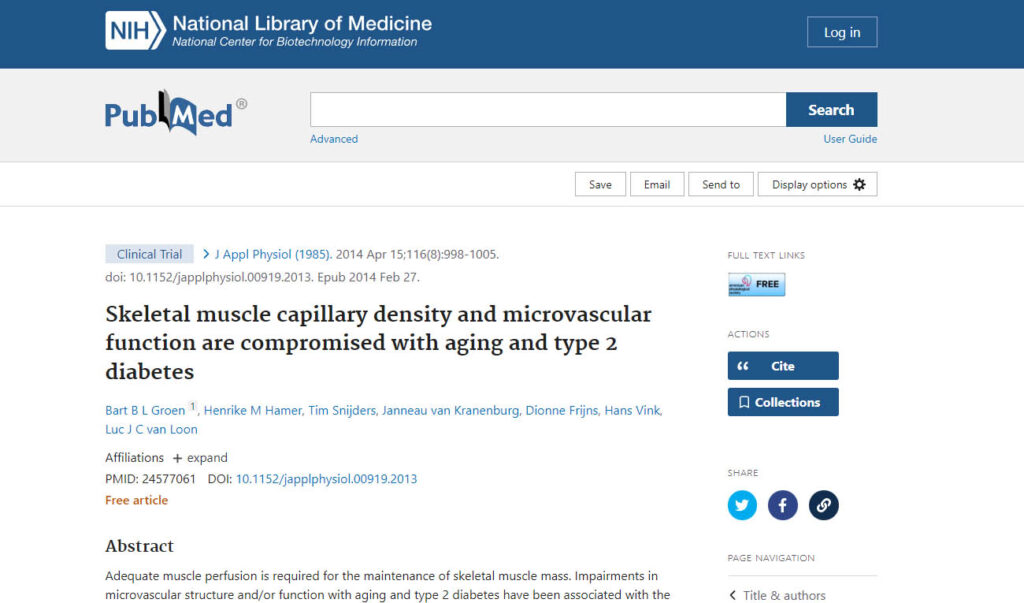Abstract
Adequate muscle perfusion is required for the maintenance of skeletal muscle mass. Impairments in microvascular structure and/or function with aging and type 2 diabetes have been associated with the progressive loss of skeletal muscle mass. Our objective was to compare muscle fiber type specific capillary density and endothelial function between healthy young men, healthy older men, and age-matched type 2 diabetes patients. Fifteen healthy young men (24 ± 1 yr), 15 healthy older men (70 ± 2 yr), and 15 age-matched type 2 diabetes patients (70 ± 1 yr) were selected to participate in the present study. Whole body insulin sensitivity, muscle fiber type specific capillary density, sublingual microvascular density, and dimension of the erythrocyte-perfused boundary region were assessed to evaluate the impact of aging and/or type 2 diabetes on microvascular structure and function. Whole body insulin sensitivity was significantly lower at a more advanced age, with lowest values reported in the type 2 diabetic patients. In line, skeletal muscle capillary contacts were much lower in the older and older type 2 diabetic patients when compared with the young. Sidestream darkfield imaging showed a significantly greater thickness of the erythrocyte perfused boundary region in the type 2 diabetic patients compared with the young. Skeletal muscle capillary density is reduced with aging and type 2 diabetes and accompanied by impairments in endothelial glycocalyx function, which is indicative of compromised vascular function.


